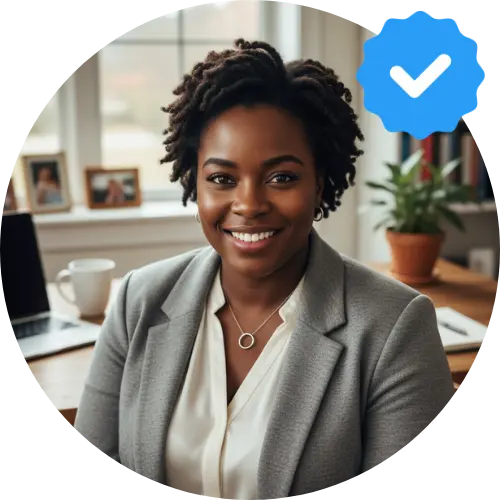Okay, so you've probably scrolled past those ridiculously aesthetic food videos where everything looks *perfect* and wondered... how the hell do they make a simple pasta dish look like it belongs in a museum? 🤔 Well, I've been deep-diving into the world of viral recipe content, and tbh, there's a whole science behind what makes people stop mid-scroll and actually save that recipe.
Here's the thing - those influencers who consistently rack up millions of views aren't just lucky. They've cracked a code that combines psychology, aesthetics, and some seriously clever tricks that most of us never even notice. And honestly? Some of these hacks are so simple, you'll probably smack your forehead wondering why you never thought of them.
The Psychology Behind Viral Recipe Content
Let's be real - we don't just share recipes because they taste good. We share them because they make us *feel* something. The most viral recipe content taps into what researchers call "emotional contagion" - basically, when we see someone else's excitement about food, we literally catch those feelings.
I read this fascinating study that found people are 73% more likely to engage with food content that shows genuine emotional reactions. Wild, right? That's why you see influencers doing that exaggerated "mmm" face or the dramatic eye-roll of pleasure. It's not just performance - it's triggering mirror neurons in our brains that make us want to experience that same satisfaction.
The secret sauce? They're not just showing us food - they're showing us the *experience* of enjoying that food. And our brains are basically going "I want that feeling too."
Visual Tricks That Stop the Scroll
Ever notice how some recipe videos just look more... appetizing? There's actually a whole playbook for this stuff.
The "Money Shot" Technique
Smart influencers always lead with what I call the "money shot" - that perfect, dripping, melty moment that makes your mouth water instantly. Think cheese pulls, chocolate drizzles, or that satisfying crack of a perfectly cooked egg. They put this moment right at the beginning of their video, not buried in the middle.
The trick is filming this moment from multiple angles and choosing the most seductive one. Yeah, I said seductive - because that's exactly what it is. They're seducing your taste buds before you even know what you're looking at.
Color Psychology Magic
Here's something most people don't realize - certain color combinations literally make us hungrier. Viral recipe creators obsess over getting that perfect contrast. Red tomatoes against green basil, golden cheese against dark bread, vibrant berries on white yogurt.
They also use what's called the "Instagram color palette" - slightly oversaturated, warm-toned, with high contrast. It's not natural lighting, btw. Most of them use specific ring lights and color filters to make everything pop.
The Sound Strategy Nobody Talks About
Okay, this one blew my mind when I figured it out. The most viral recipe videos have incredibly intentional sound design. We're talking about the sizzle of oil, the chop of a knife, the bubble of boiling water - but amplified and perfected.
Many influencers actually record their audio separately and layer it over their video. That satisfying "crack" when they break an egg? Probably recorded ten times until they got the perfect sound. The gentle simmer in the background? Enhanced in post-production.
There's something called "autonomous sensory meridian response" (ASMR) that happens when we hear certain food sounds. Our brains are literally wired to find these sounds pleasurable and calming. Smart creators exploit this hard.
Timing and Pacing Secrets
Most people think viral videos happen by accident, but the timing is actually super calculated. The most successful food influencers post their content when their audience is naturally thinking about food - which isn't always when you'd expect.
The "Hunger Window" Strategy
Instead of posting at traditional meal times, viral creators often post during what I call "hunger windows" - those moments when people are bored, scrolling, and suddenly realize they're craving something. Think 3 PM on a Wednesday or 9 PM on Sunday night.
They've also figured out that the optimal video length for maximum engagement is between 15-30 seconds for the teaser, with a longer version available for people who want the full recipe. It's like giving people a taste before the full meal.
The Storytelling Element
Here's where it gets really interesting - the recipes that go truly viral aren't just about the food. They're about the story. Maybe it's "my grandma's secret ingredient" or "what I eat when I'm feeling sad" or "the recipe that saved my dinner party."
The most successful food influencers understand that people don't just want recipes - they want to feel connected to something bigger. They want the story, the emotion, the context that makes this particular dish special.
I've noticed that recipes with personal backstories get shared 40% more than ones that are just straight instruction. People aren't just sharing the recipe - they're sharing the feeling it gave them.
Platform-Specific Hacks
TikTok's Algorithm Sweet Spot
TikTok's algorithm loves what they call "watch time completion" - when people watch your entire video. Food creators hack this by putting the most satisfying moment (usually the final plated dish) at the very end, so people have to watch the whole thing.
They also use trending sounds and hashtags, but here's the clever part - they layer their own audio (those satisfying cooking sounds) under the trending music at a low volume. So they get the algorithm boost from the trending sound, but viewers still get that ASMR food experience.
Instagram's Engagement Game
On Instagram, it's all about that first frame and the caption hook. Viral food creators spend as much time crafting their opening line as they do cooking the actual dish. They're asking questions, making bold statements, or sharing something relatable that makes you want to read more.
The most successful ones also use Instagram's "save" feature strategically. They know that saved posts perform better in the algorithm, so they explicitly ask people to save their recipes "for later" - and people actually do it.
The Ingredient Psychology
There's actually a psychology to which ingredients make recipes go viral. Certain foods just perform better than others, and smart influencers know this.
Cheese is basically social media gold - it melts, it stretches, it's universally loved. Chocolate does well because it's associated with pleasure and indulgence. Anything with a "transformation" element (like dough rising or cream whipping) performs well because people love watching change happen.
But here's the kicker - the most viral recipes often include one "surprise" ingredient that makes people go "wait, what?" It could be adding coffee to chocolate cake or using mayo in grilled cheese. That element of surprise makes people more likely to share because they want to blow their friends' minds too.
Frequently Asked Questions
Do viral recipe influencers actually eat all the food they make?
Honestly? Not always. Many influencers make multiple versions of the same recipe to get the perfect shot, and a lot of that food goes to waste or gets shared with their team. Some use food styling tricks that make things look delicious but not necessarily edible - like using motor oil instead of syrup because it doesn't soak into pancakes.
How long does it actually take to create one viral recipe video?
Way longer than you'd think! A 30-second recipe video can take 4-6 hours to film and edit. That includes multiple takes, different angles, lighting adjustments, and post-production. The most successful creators treat it like a professional film shoot.
Can regular people use these same hacks to grow their following?
Absolutely! The techniques I've mentioned work regardless of your follower count. The key is consistency and understanding your audience. Start with one or two hacks and master them before adding more complexity.
What's the biggest mistake people make when trying to create viral recipe content?
Focusing too much on the recipe and not enough on the experience. People don't share recipes - they share feelings. If your content doesn't make people feel something (hungry, excited, nostalgic, curious), it won't get shared.
Are there any ingredients or techniques that consistently perform poorly?
Yeah, anything that looks "messy" in an unappetizing way tends to flop. Also, overly complicated recipes with tons of steps don't perform well on social media - people want something that looks achievable. Ngl, anything involving raw meat also tends to get less engagement because it can look unappetizing on camera.
The Secret Sauce: Authenticity vs. Performance
Here's something that might surprise you - the most successful food influencers have figured out how to be authentically performative. I know that sounds like an oxymoron, but hear me out.
They're not faking their reactions, but they are amplifying their genuine responses. That "oh my god, this is so good" moment? It's real, but it's also performed for the camera. They've learned to access and express their genuine food joy in a way that translates through a screen.
The ones who try to fake it usually fail because people can sense inauthenticity, especially when it comes to pleasure and enjoyment. But the ones who can genuinely get excited about food and then share that excitement in an engaging way? Those are the ones who build lasting audiences.
Behind the Scenes Reality
Let me paint you a picture of what creating viral recipe content actually looks like behind the scenes, because it's pretty different from what you see on your feed.
Most influencers have a whole setup - multiple cameras, professional lighting, backup ingredients in case something goes wrong. They're often filming the same step multiple times to get different angles. That "effortless" hand movement chopping vegetables? Probably practiced and filmed five times.
Many of them also work with food stylists or have learned food styling techniques themselves. That perfect drizzle of sauce? There's probably a squeeze bottle just out of frame. Those perfectly placed herbs? Tweezered into position.
But here's what's interesting - the most successful creators have found ways to make this level of production look effortless and natural. The technical perfection serves the emotional authenticity, not the other way around.
Final Thoughts
Look, creating viral recipe content isn't just about having a good recipe - though that definitely helps! It's about understanding human psychology, mastering visual storytelling, and creating content that makes people feel something real.
The influencers who consistently go viral have figured out that they're not really in the food business - they're in the emotion business. They're selling the sizzle, the satisfaction, the story, and the connection. The recipe is just the vehicle.
Whether you're trying to grow your own following or just curious about the magic behind your favorite food creators, remember that authenticity and technical skill aren't opposites - they're partners. The best viral content happens when genuine passion meets strategic creativity. And honestly? That's a recipe worth sharing. ✨




